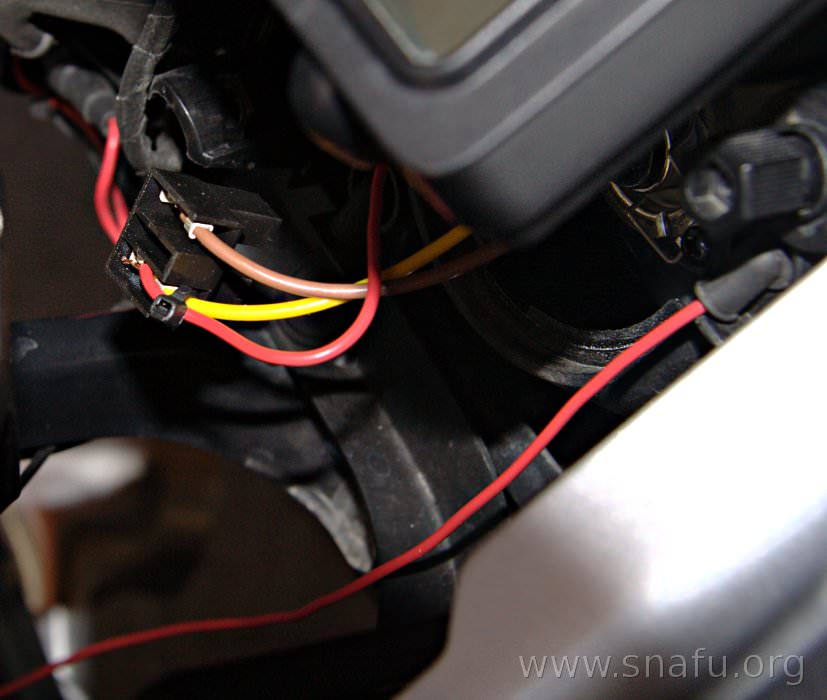flemmings27
New member
List,
I'm in process of installing Centech's AP2 fuse panel and the APR130R harness on my 2009 R1200RT. The fuse is all wired up, except for the orange wire ( which is the relay trigger) so right now, only 2 fuse connection points are hot, while the stronger 3 are dormant. Since I've mounted the fuse panel under the rear seat, the logical place to go with the orange wire, seems to be to the rear tail light. However, I'm not quite sure I understand the whole canbus thing, but it seems to me that since my computer can tell me when a rear brake light is out, then the tail lights must also be going through the canbus.
Thus, I have 3 concerns/questions about attaching the Orange wire to my brake light wire (ie, by stripping some of the plastic off the wire leading to the tail light).
1. Can this be done safely without potential to damage the bike's canbus system? Are the tail lights actually going through the controller for the canbus?
2. I plan to call Centech's tech for part of the following question, but will ask here in case anyone knows by their own experience. Does the relay have a clamping diode? I ask because I assume that there will be a voltage spike every time the relay shuts off. I'm also assuming that the controller/computer on the bike uses resistance to tell if the bulb does not work, and that adding the relay will change the resistance in the circuit, and thus, the voltage spike could cause damage to the controller.
3. I also considered using the rear socket accessory point, but the size of the wiring harness made me wonder about what that was wired into.
Finally, has anyone put an AP2 on their R1200RT (w/canbus) and gone through the rear tail light? If so, how/where exactly did you connect? On the posts of the light? On the wire?
Thanks in advance
Signed,
Bike's only a year old and don't want to screw it up!
I'm in process of installing Centech's AP2 fuse panel and the APR130R harness on my 2009 R1200RT. The fuse is all wired up, except for the orange wire ( which is the relay trigger) so right now, only 2 fuse connection points are hot, while the stronger 3 are dormant. Since I've mounted the fuse panel under the rear seat, the logical place to go with the orange wire, seems to be to the rear tail light. However, I'm not quite sure I understand the whole canbus thing, but it seems to me that since my computer can tell me when a rear brake light is out, then the tail lights must also be going through the canbus.
Thus, I have 3 concerns/questions about attaching the Orange wire to my brake light wire (ie, by stripping some of the plastic off the wire leading to the tail light).
1. Can this be done safely without potential to damage the bike's canbus system? Are the tail lights actually going through the controller for the canbus?
2. I plan to call Centech's tech for part of the following question, but will ask here in case anyone knows by their own experience. Does the relay have a clamping diode? I ask because I assume that there will be a voltage spike every time the relay shuts off. I'm also assuming that the controller/computer on the bike uses resistance to tell if the bulb does not work, and that adding the relay will change the resistance in the circuit, and thus, the voltage spike could cause damage to the controller.
3. I also considered using the rear socket accessory point, but the size of the wiring harness made me wonder about what that was wired into.
Finally, has anyone put an AP2 on their R1200RT (w/canbus) and gone through the rear tail light? If so, how/where exactly did you connect? On the posts of the light? On the wire?
Thanks in advance
Signed,
Bike's only a year old and don't want to screw it up!


 The wiring diagram says it comes from the ZFE and is labeled GEN+
The wiring diagram says it comes from the ZFE and is labeled GEN+